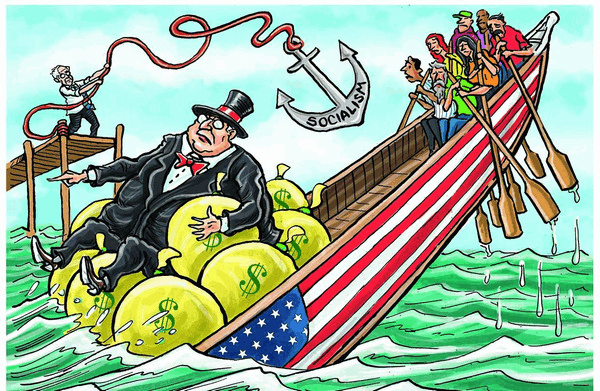
Richard C. Cook is a retired U.S. federal analyst who served with the Carter White House, NASA, and the U.S. Treasury and as an aide to U.S. Congressman Dennis Kucinich (D-OH).
He has just published a thoughtful book, Our Country Then and Now, which provides a sweeping economic history of the U.S. intermeshed with his own family history.
The book traces the rise of plutocratic rule in the U.S. and negative consequences of this rule, ranging from the cruelty directed against Native Americans to the decimation of U.S. manufacturing vitality and the working class to the waging of endless wars.
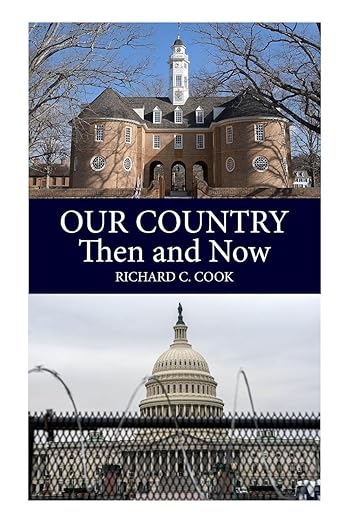

Cook sees as a major turning point in U.S. history the creation of the Federal Reserve by the Woodrow Wilson administration at the behest of private banking interests, whose goal was to wrest control of the nation’s money supply.
After World War II, these banking interests pushed for creation of the CIA as the enforcement arm of U.S. foreign policy that was expert in propaganda.
CIA Director William Casey told President Ronald Reagan in 1981 that “we will know our disinformation program is complete when everything the American people believe is false.”[1]
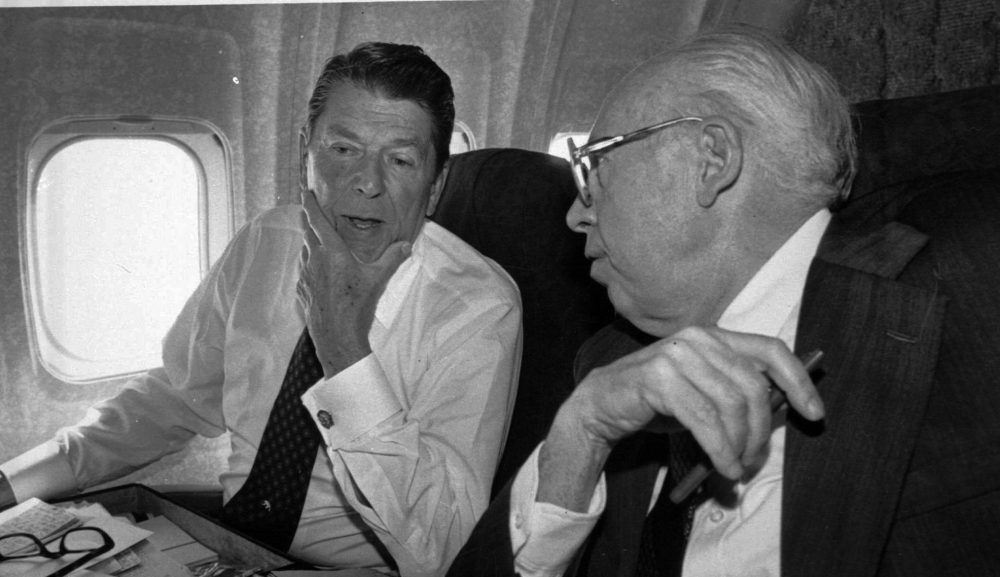
Cook writes that, since Casey uttered those statements, the CIA has been working with the rest of the national security state, including government supported think tanks, mainstream media and non-profits like the Council on Foreign Relations and the Atlantic Council, to further Casey’s goal with the support of internet giants like Google and Wikipedia.
The CIA wants to create a “depleted world population of compliant zombies, drained of creative energy, incapable of independent thinking, riddled with fear, obedient to every conditioned impulse, running from every virus, hating every designated enemy, parroting the mass media, spending as advertising directs, numbed by drugs and medication, and ready to die at the whim of their masters,” according to Cook.[2]

These masters have long waged what Cook calls a campaign of genocide against working class and lower income people that has resulted in falling life expectancies in the U.S. and moral breakdown of society. They have provoked wars around the world after staging false-flag attacks—like the Gulf of Tonkin incident and 9/11—that made it look like U.S. leaders were acting in self-defense.
Cook argues that a primary purpose of the most recent foreign policy disaster—the U.S proxy war with Russia, which has resulted in the deaths of 500,000 Ukrainians—has been to sever relations between Germany and Russia so that the two could not collectively challenge Anglo-American hegemony.
Particularly significant was the blowing up of the Nord Stream II pipeline, which would have effectively interlinked Germany and Russia’s economies and fueled an economic boom in Germany based on its access to cheap Russian energy.

Anglo-American elites had been at war with Germany since the early 1910s, when Germany was maneuvered into a war that was designed to undermine its potential challenge to British worldwide hegemony.[3]
History is thus repeating itself as the U.S. Empire wants to now sever Russia from Germany and the rest of Europe to prevent any effective East-West alliance from developing against it and so it can dominate Europe.
Problems Rooted in History
Born in Montana to a family of mixed Puritan and Native American ancestry, Cook traces U.S. financial problems to the failings of the Founding Fathers to establish a coherent system of financial management, resulting in chaos in the creation and utilization of money by government.
According to Cook, the Federal Reserve is a betrayal of the U.S. Constitution which gives Congress the right to coin money and regulate the money supply.
In the 1860s, Abraham Lincoln approved the direct printing of greenbacks (what Lincoln called “the people’s currency”) to fund the Civil War.
The model by which the government furnishes its own money without cost is one that Cook believes should be returned to today, as it could allow for paying off the $31 trillion debt and revitalization of U.S. manufacturing, without creating artificial inflation.
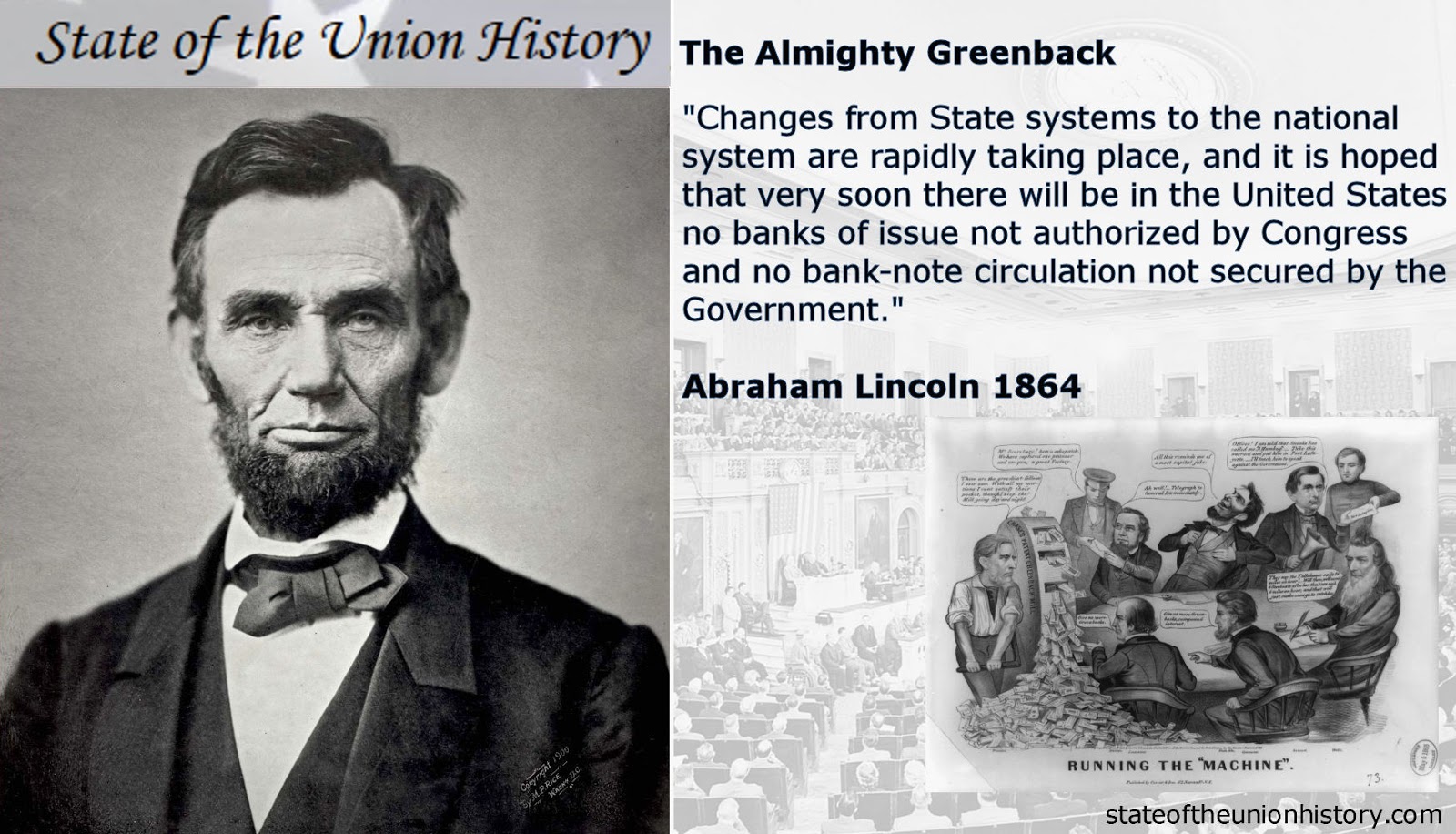
In 1791, the nation’s first Treasury Secretary, Alexander Hamilton, established the First Bank of the United States, which lasted until 1811[4] as a financial source for internal improvements—namely roads and canals—as well as productive industry and manufacturing. Hamilton also saw it as a source for financing a future American empire.
America’s third president, Thomas Jefferson, was as committed to an American empire as Hamilton, though one that in his vision would be rooted in land, labor and commerce, not bank-created money. Jefferson warned that banking institutions were potentially more dangerous to U.S. liberties than standing armies, and could set the groundwork for the growth of a moneyed aristocracy.
While ruing their commitment to empire, Cook believes that both Hamilton and Jefferson were correct in their own way. A central bank was needed to generate spending power to finance public projects and manufacturing industries, though the fears of Jefferson have also come to pass, particularly because of the relinquishing of national control over the banks and establishment of the Federal Reserve.[5]

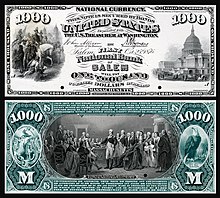
In 1863, Congress passed a national banking act to create a uniform currency of national bank notes and to require major banks to invest in government bonds. Cook says that this law paved the way for the eventual creation of the Federal Reserve System, which largely ceded Congress’s constitutional power of money creation to the world of Big Finance.
Salmon Chase, later Chief Justice of the United States, said that his promoting passage of the National Bank Act was the greatest mistake in his life, as it built up a monopoly affecting every interest in the country. Horace Greeley, founder and editor of The New York Tribune and co-founder of the Republican Party, said that, “by an iniquitous system, we have nationalized a system of oppression, which though more refined, is no less cruel than the old system of chattel slavery.”[6]
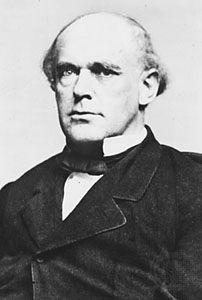
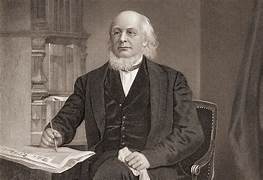
During the Gilded Age (1870-1900), income taxes were abolished and the U.S. was firmly put on the gold standard, with the pacification and removal of Native American tribes from choice lands achieved through brutal military conquest.
In 1870, the modern petroleum industry was started with the founding of the Standard Oil Company by John D. Rockefeller, who then diversified into ownership of railroads, chemicals, mining, insurance, utilities, medicine and banking.
Rockefeller established a family dynasty that Cook says “stood at the center of the U.S. oligarchy of financial interests that have run the country to this day.”[7]
By 1904, Cook writes, 40% of the capital invested in U.S. manufacturing was controlled by corporate monopolies or trusts.
Theodore Roosevelt built his reputation as a “progressive trust-buster” but failed to break up the “money trust,” dominated by Rockefeller, his brother William, James Stillman of the National City Bank of New York, E.H Harriman, director of the Union Pacific Railroad, and Jacob Schiff, head of the Wall Street firm of Kuhn, Loeb & Company.
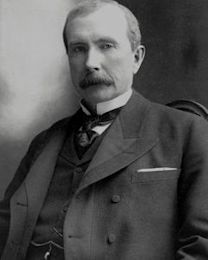


Another investor group was led by banker J.P. Morgan, and included Great Northern Railroad CEO James Hill and George Baker, Sr., head of the First National Bank that later became part of what is now Citigroup.
Cook says that the Money Trust was the progenitor of what economists today call the FIRE economy—finance, insurance and real estate. Over time, a major shift occurred in an emphasis from earning money through industrial development to the making of money for its own sake through financial speculation and trading.
In November 1910, Rockefeller, Morgan, Stillman and Nelson Aldrich, a Republican senator from Rhode Island whose daughter married Rockefeller’s only son, John D. Rockefeller, Jr., met at a resort off Jekyll Island in Georgia with the objective of developing plans (known as the Aldrich plan) for a central bank that would back up bankers when they ran out of gold or cash in financial emergencies and help set a favorable currency value.

Present also at the meetings were the Assistant Treasury Secretary A. Piatt Andrew, bankers Henry Davison and Arthur Shelton, president of the Rockefeller National City Bank of New York Frank Vanderlip, and transplanted German banker Paul Warburg, a rising star with New York’s Kuhn, Loeb & Company, who had Rothschild connections.


According to Cook, Baron Alfred Rothschild of London was the real mastermind of the plan that established the Federal Reserve in 1913 after the election of Woodrow Wilson, a Democrat, to the presidency.
In the 1912 election, Theodore Roosevelt decided to run at the last minute on a third-party ticket (Bull Moose), giving Wilson—the banker’s favorite—the election over Republican William Howard Taft by splitting Taft’s vote.
Congressman Charles A. Lindbergh, Sr. (R-MN), father of the famous aviator, emerged as the leading congressional critic of the Federal Reserve, introducing a resolution to investigate the money trusts and their role in helping to pass legislation that led to creation of the Federal Reserve.
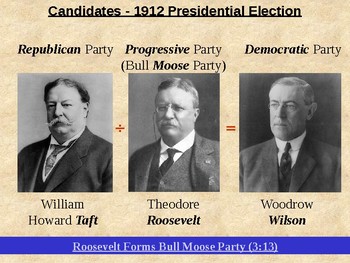
Lindbergh Sr.’s resolution resulted in hearings before Louisiana Democrat Arsène Pujo, chairman of the House Banking and Currency Committee, before which J.P. Morgan was forced to testify.[8]
Lindbergh Sr. and others wondered why private banks should have access to readily created currency furnished by the government to step in and save them, in instances most likely caused by the banks’ own speculative forays in pursuit of greater profits.
Lindbergh Sr. said: “This [Federal Reserve] Act establishes the most gigantic trust on Earth. When the President [Wilson] signs this bill, the invisible government of the Monetary Power will be legalized…the worst legislative crime of the ages, perpetuated by this banking and currency bill. The caucus of the party bosses have again operated and prevented the people from getting the benefits of their own government.”[9]
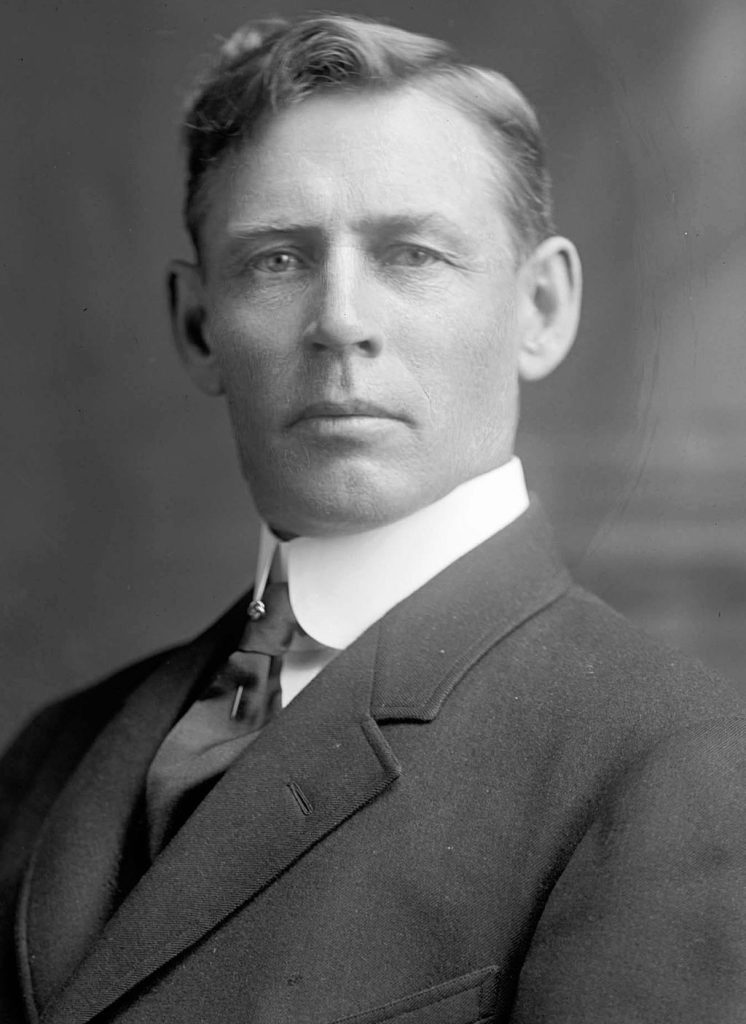
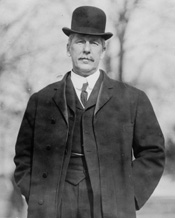
According to Cook, the Federal Reserve Act combined with Wilson’s re-introduction of the income tax, enabled the massive explosion of American spending in World War I and the huge profits the financial system would make in handling all that money.
Some researchers believe that the Rothschilds and Warburgs were instrumental in instigating the Federal Reserve to help Britain and France finance their project of fomenting and then perpetuating a war with Germany—the latter of which was enabled by loans that J.P. Morgan provided to them during the Great War.
Cook writes that, “through the Federal Reserve Act of 1913, the U.S. Congress ceded its Constitutional power to create the nation’s currency and regulate its value. It ceded that power to the private banking industry. So whoever controls the banking industry, controls the U.S. It was then that the U.S. ceased to be a sovereign republic. From then until today, it’s the money trust that rules.”[10]

Horrendous Policies
The second half of Cook’s book details the horrendous policies that the Money Trust instituted.
In the 1920s and early 1930s, for example, they helped precipitate the Great Depression while financing the rise of the Nazis in Germany. The Nazis were admired in certain circles for waging a war on the political left and in 1941 starting a suicidal war against Soviet Russia that weakened both countries to the benefit of Anglo-American imperialism.
Roosevelt’s administration saved the U.S. from the Depression with the New Deal but provoked Japan into firing the first shot at Pearl Harbor so the U.S. could destroy the Japanese Empire and establish the U.S. as the dominant Pacific power, and have a pretext to go to war with Hitler (who had not yet declared war on the U.S.).
During World War II, the Rockefeller-financed Council on Foreign Relations (CFR) began lobbying the Roosevelt administration to enact policies designed to establish the U.S. as a premier world power. The CFR’s mortal enemy was the America First Committee, chaired by Charles Lindbergh, Jr., which advocated defending the Western Hemisphere but going no further.
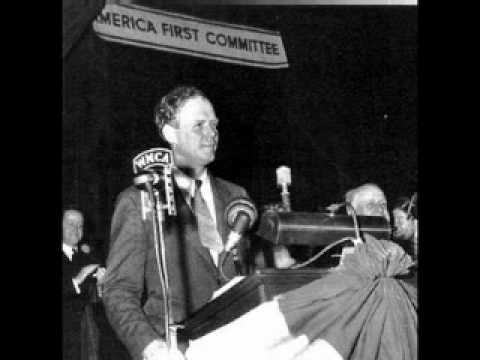
Future CIA Director Allen Dulles, a Wall Street lawyer who represented clients who had bankrolled Hitler, chaired the CFR’s armaments group that promoted U.S. military expansion after the war. [11]

Towards the end of World War II, the Bretton Woods Conference was highly significant in establishing the primacy of the U.S. dollar as a global currency and basis for post-war international trade.
U.S. banking interests at this time moved aggressively to control the devastated economies of Europe through Marshall Plan funds, which were returned to the U.S. through the purchase of American products.
The newly founded CIA received more than 5% of the funds allocated under the Marshall Plan, which it used to establish front companies in Europe, to help rig elections like in Italy so left-wing parties would not win, and to establish fifth columns of spies and saboteurs in Ukraine and other Eastern European countries to try to undermine pro-Soviet governments taking shape there.
According to Cook, David Rockefeller, and his brother Nelson, managed the Rockefeller family’s South American banking empire, forging alliances with the families of oligarchs and army generals in Venezuela, Brazil, Argentina, Peru and Chile, which were also assisted by the CIA.

Cook writes that “it was Rockefeller money and credit that forged the backbone of South American fascism. And it was the CIA that would become the backstage enforcer of U.S. financial hegemony—‘the jackals’ charged with overthrowing progressive governments and assassinating their leaders.”[12]
Head of the Chase Manhattan Bank who served in military intelligence in North Africa during World War II, David Rockefeller was regularly briefed on covert intelligence operations by CIA division chiefs in the 1950s and 1960s.
David’s brother, Nelson, was appointed by President Dwight Eisenhower as a special assistant for Cold War planning, where part of his portfolio was monitoring and approving covert CIA activities.[13]
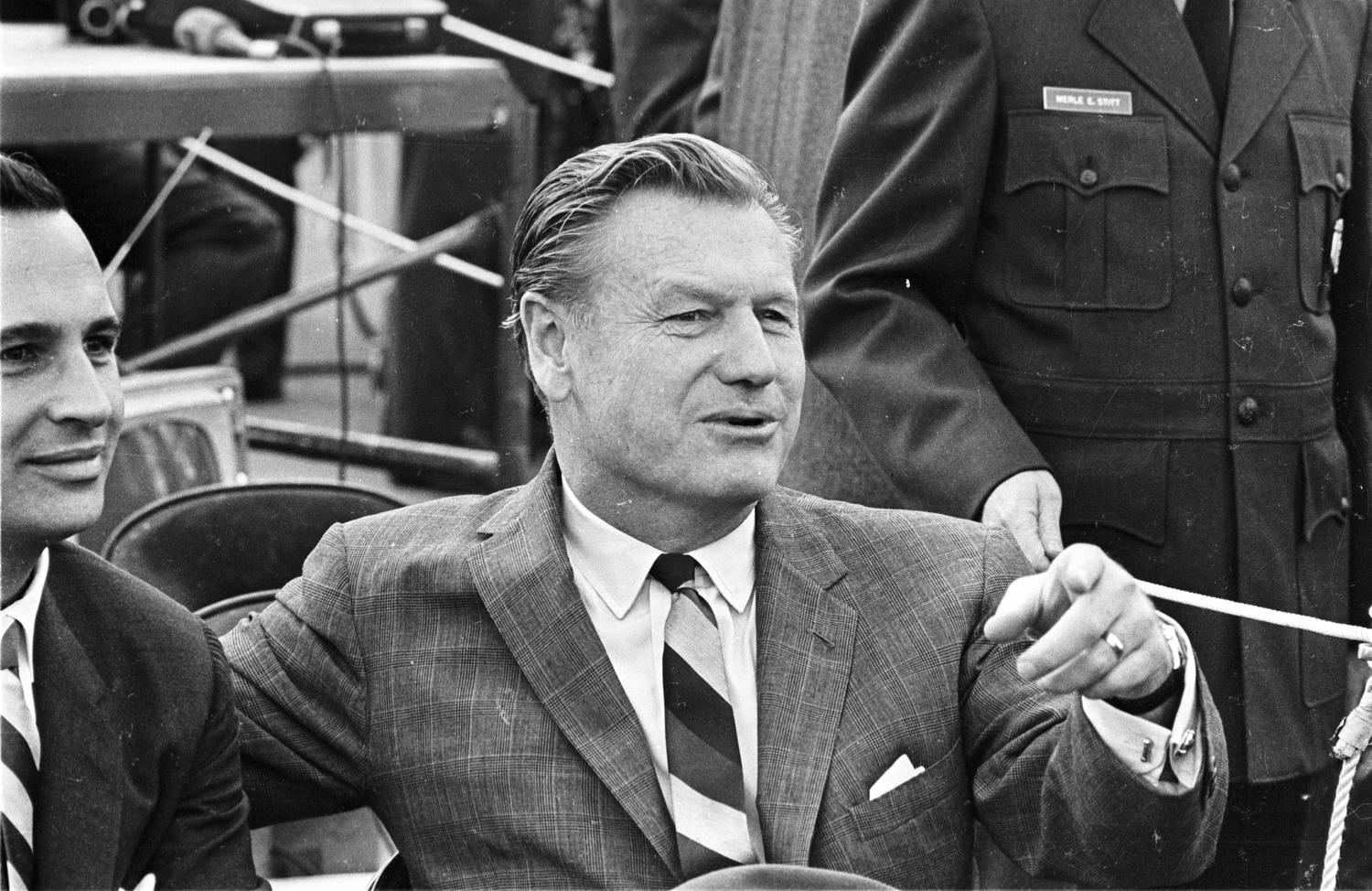
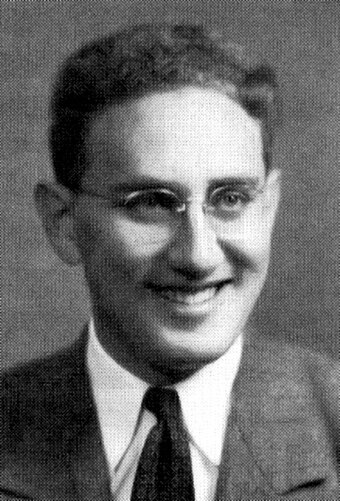
Rockefeller took under his wing a young Harvard Professor, Henry Kissinger, who in the early 1950s was named a consultant to the director of the Psychological Strategy Board (PSB), an operating arm of the National Security Council for covert psychological and paramilitary operations, and to the Operations Coordinating Board (OCB), the highest policy-making board for implementing clandestine activities against foreign governments.[14]
Cook writes that “the Rockefeller financial empire and CIA were two sides of the same coin and the same power center—one side operating more or less openly and the other in the shadows. Both had the same objective: global U.S. control.”[15]
When President John F. Kennedy, son of a wealthy stock market investor and bank president, took a stand against U.S. global military dominance in a speech advocating for détente with the Soviets at American University in June 1963, he was soon thereafter assassinated, with clear involvement by the CIA.
Kennedy’s fate was similar to other U.S. presidents (Lincoln, Garfield, McKinley) who challenged the U.S. financial oligarchy in a fundamental way.
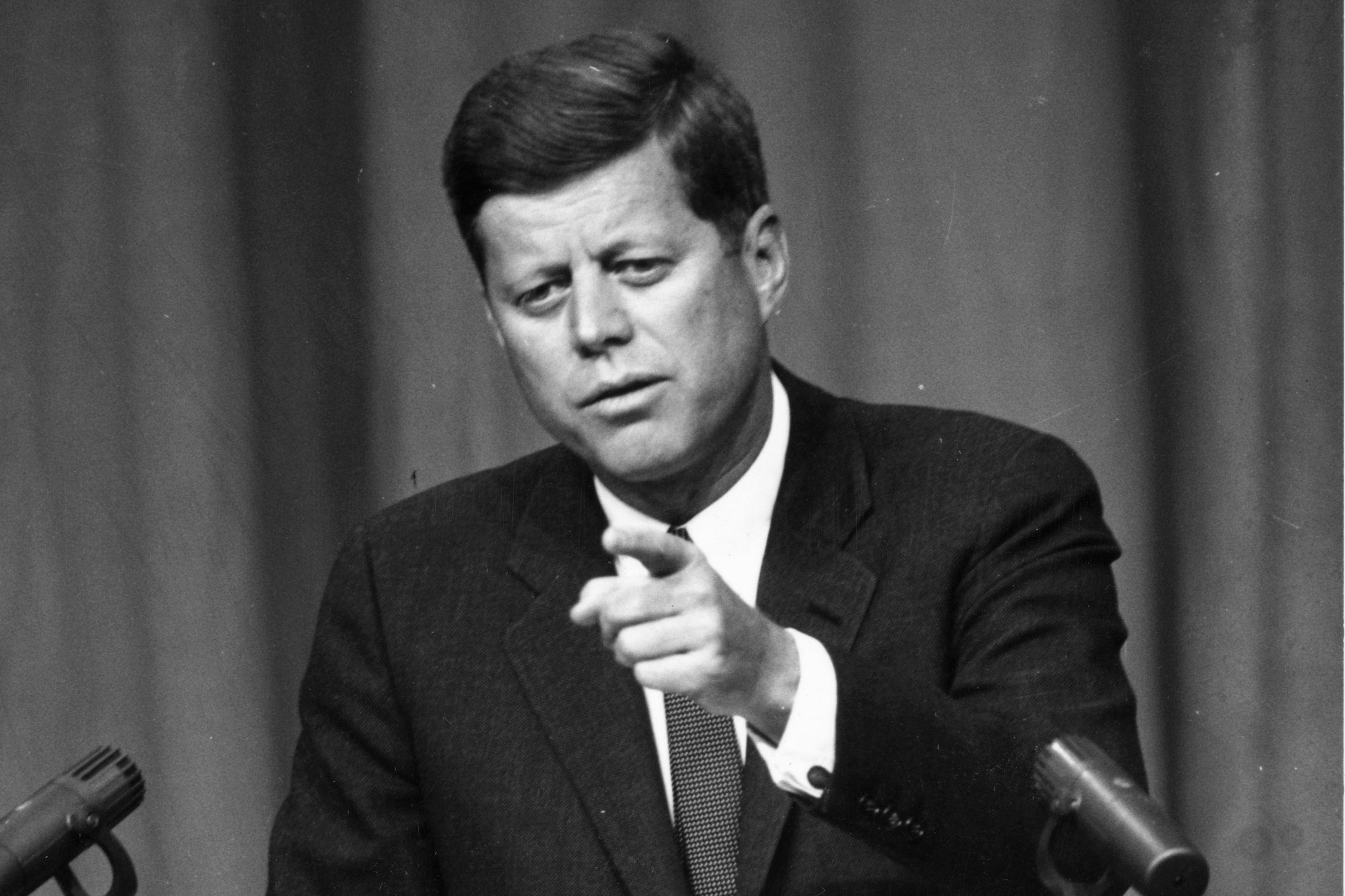
Kennedy’s economic program was opposed by the oligarchy because it adopted measures designed to enhance productivity over financial speculation, and crossed Big Oil with the effort to eliminate the oil depletion allowance (a subsidy for oil companies).[16]
The Rockefellers expanded their influence during Nixon’s presidency through their agent Kissinger, Nixon’s top national security adviser. He supported the abandonment of Bretton Woods, which eliminated any restrictions on the worldwide expansion of U.S. banks.
These banks benefited from the higher oil prices, which they had helped to manipulate after the 1973 Yom Kippur War. Kissinger struck a deal with Arab oil producers ensuring that oil sales would be denominated in U.S. dollars, ensuring the dominance of the U.S. dollar as a global currency reserve.

The resultant need for the dollar enabled the Federal Reserve to print money for which there would be enduring external demand. This in turn financed the worldwide U.S. military garrison that now contains more than 800 overseas U.S. military bases.
Much of the newly printed money went into speculation rather than investment in productive industries, making possible the frenzy for leveraged buyouts in the 1980s and mass layoffs and deindustrialization that accompanied it along with the birth of all-powerful hedge funds that further warped the U.S. economy in the interests of the elite banking class.
With unions decimated, both major parties by this time were in the thrall of this banking elite. Over the next four decades, they advanced policies that produced heavy deficits and inflation while hollowing out the middle class by supporting cuts in social services and free-trade agreements that led to the offshoring of well-paying manufacturing jobs.
In an attempt to deal with high inflation in the late 1970s, the Federal Reserve under Paul Volcker, set high interest rates that were devastating to small businesses along with the Carter administration’s austerity regimen.[17]
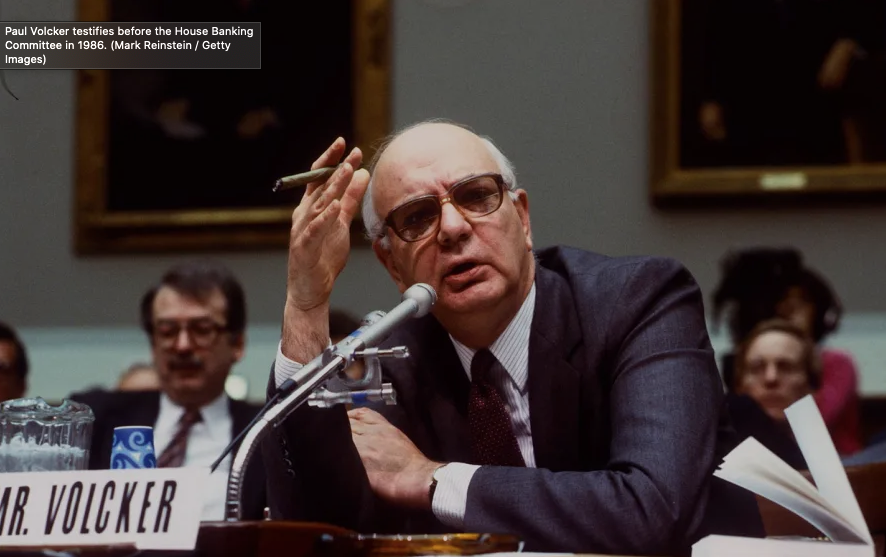
Throughout its 100-year history, the Fed has almost always supported the interests of Big Finance over ordinary people, with cataclysmic results.
Cook’s Political Awakening and the NEED Act
Cook’s political awakening occurred when he became a whistleblower while working for NASA reporting on design flaws in the Challenger space shuttle that blew up one minute after lift-off at the Kennedy Space Center in Florida on January 28, 1986, killing all seven astronauts.
Cook wrote a book, Challenger Revealed, explaining his view that NASA failed to stop the flight because the space shuttle was being taken over by the Air Force and had to keep flying because the shuttle was being used as a testing platform for the Strategic Defense Initiative (SDI), Reagan’s scheme for putting weapons into space that would supposedly defend against a Soviet missile attack and that were capable of a nuclear first strike.[18]
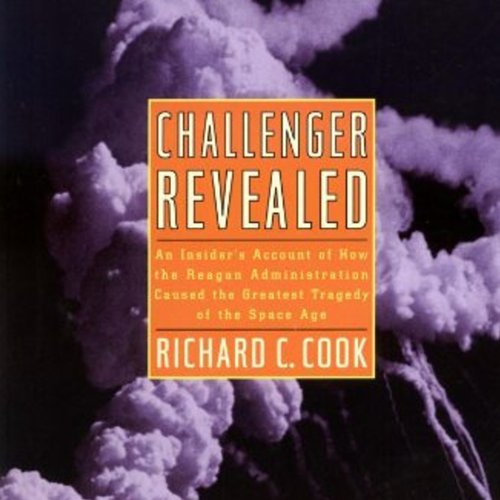
After leaving NASA, Cook worked for the U.S. Treasury Department’s Financial Management Service and undertook research on monetary policy that became Congressman Dennis Kucinich’s NEED Act.

The NEED Act would abolish the Federal Reserve System and replace it with a monetary authority within the U.S. Department of the Treasury, which would serve as a central bank, a depository for federal funds, and a point of origin for direct issuance of U.S. currency.
Restoring to constitutional government the sovereign power to create money, the private banking system could only lend money beyond its deposit base by borrowing it first from the monetary authority, according to established guidelines.
Through the NEED Act, the federal government would provide direct funding for infrastructure projects, for paying down the national debt, and for interest-free loans to state governments.
Speculative trading in derivatives and all forms of money laundering would be banned, and the national debt, which currently stands at $31 trillion, would be gradually paid off, with no further need for federal government borrowing.
Cook writes that similar ideas of direct payment of government obligations through self-generated currency have been circulating for generations, and the NEED Act brings these ideas to a form suitable for immediate implementation.
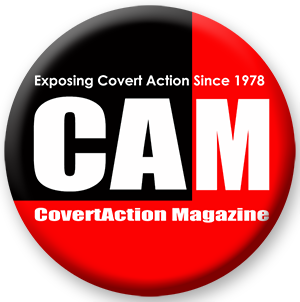
-
Richard Cook, Our Country Then and Now (Atlanta: Clarity Press, 2024), 309. ↑
-
Cook, Our Country Then and Now, 309. ↑
-
For corroboration of Cook’s view, see Harry Elmer Barnes, The Genesis of the World War: An Introduction to the Problem of War Guilt (New York: Alfred A. Knopf, 1926). ↑
-
The Second National Bank was founded in 1816 but shut down in 1833 by President Andrew Jackson, who fed off the fears of the public that the bank was plunging people into debt through usurious loans and was concentrating economic power in a narrow financial elite that was becoming too powerful. ↑
-
Cook, Our Country Then and Now, 28-33. ↑
-
Cook, Our Country Then and Now, 93. ↑
-
Cook, Our Country Then and Now, 133, 183. ↑
-
Cook, Our Country Then and Now, 186. ↑
-
Cook, Our Country Then and Now, 189. ↑
-
Cook, Our Country Then and Now, 189. ↑
-
Cook, Our Country Then and Now, 237. ↑
-
Cook, Our Country Then and Now, 252. ↑
-
Cook, Our Country Then and Now, 255. ↑
-
Idem. ↑
-
Idem. ↑
-
Kennedy also favored government deficit spending. At the time of his death, the U.S. had experienced 33 consecutive months of GNP expansion. Cook, Our Country Then and Now, 267. ↑
-
The Carter administration could have fought inflation through subsidies and setting price controls. ↑
-
Cook, Our Country Then and Now, 312. ↑
CovertAction Magazine is made possible by subscriptions, orders and donations from readers like you.
Blow the Whistle on U.S. Imperialism
Click the whistle and donate
When you donate to CovertAction Magazine, you are supporting investigative journalism. Your contributions go directly to supporting the development, production, editing, and dissemination of the Magazine.
CovertAction Magazine does not receive corporate or government sponsorship. Yet, we hold a steadfast commitment to providing compensation for writers, editorial and technical support. Your support helps facilitate this compensation as well as increase the caliber of this work.
Please make a donation by clicking on the donate logo above and enter the amount and your credit or debit card information.
CovertAction Institute, Inc. (CAI) is a 501(c)(3) non-profit organization and your gift is tax-deductible for federal income purposes. CAI’s tax-exempt ID number is 87-2461683.
We sincerely thank you for your support.
Disclaimer: The contents of this article are the sole responsibility of the author(s). CovertAction Institute, Inc. (CAI), including its Board of Directors (BD), Editorial Board (EB), Advisory Board (AB), staff, volunteers and its projects (including CovertAction Magazine) are not responsible for any inaccurate or incorrect statement in this article. This article also does not necessarily represent the views the BD, the EB, the AB, staff, volunteers, or any members of its projects.
Differing viewpoints: CAM publishes articles with differing viewpoints in an effort to nurture vibrant debate and thoughtful critical analysis. Feel free to comment on the articles in the comment section and/or send your letters to the Editors, which we will publish in the Letters column.
Copyrighted Material: This web site may contain copyrighted material the use of which has not always been specifically authorized by the copyright owner. As a not-for-profit charitable organization incorporated in the State of New York, we are making such material available in an effort to advance the understanding of humanity’s problems and hopefully to help find solutions for those problems. We believe this constitutes a ‘fair use’ of any such copyrighted material as provided for in section 107 of the US Copyright Law. You can read more about ‘fair use’ and US Copyright Law at the Legal Information Institute of Cornell Law School.
Republishing: CovertAction Magazine (CAM) grants permission to cross-post CAM articles on not-for-profit community internet sites as long as the source is acknowledged together with a hyperlink to the original CovertAction Magazine article. Also, kindly let us know at info@CovertActionMagazine.com. For publication of CAM articles in print or other forms including commercial internet sites, contact: info@CovertActionMagazine.com.
By using this site, you agree to these terms above.
About the Author

Jeremy Kuzmarov holds a Ph.D. in American history from Brandeis University and has taught at numerous colleges across the United States. He is regularly sought out as an expert on U.S. history and politics for radio and TV programs and co-hosts a radio show on New York Public Radio and on Progressive Radio News Network called “Uncontrolled Opposition.”
He is Managing Editor of CovertAction Magazine and is the author of six books on U.S. foreign policy, including Obama’s Unending Wars (Clarity Press, 2019), The Russians Are Coming, Again, with John Marciano (Monthly Review Press, 2018), Warmonger. How Clinton’s Malign Foreign Policy Launched the U.S. Trajectory From Bush II to Biden (Clarity Press, 2023); and with Dan Kovalik, Syria: Anatomy of Regime Change (Baraka Books, 2025).
Besides these books, Kuzmarov has published hundreds of articles and contributed to numerous edited volumes, including one in the prestigious Oxford History of Counterinsurgency .
He can be reached at jkuzmarov2@gmail.com and found on substack here.
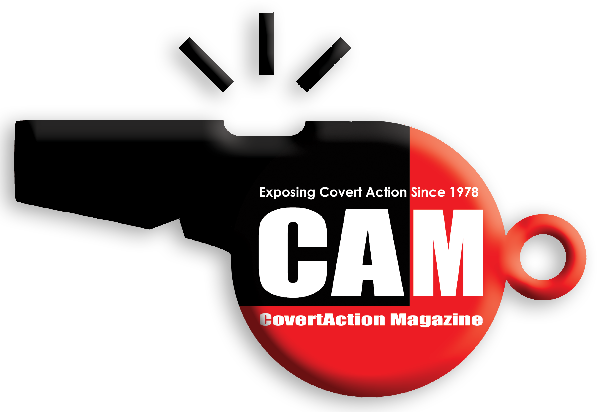
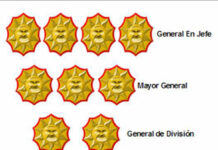
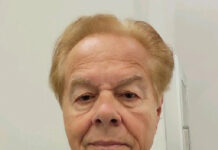

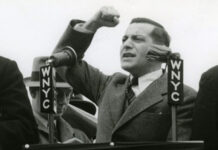


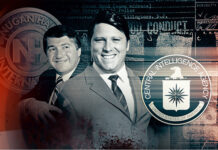

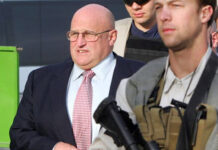
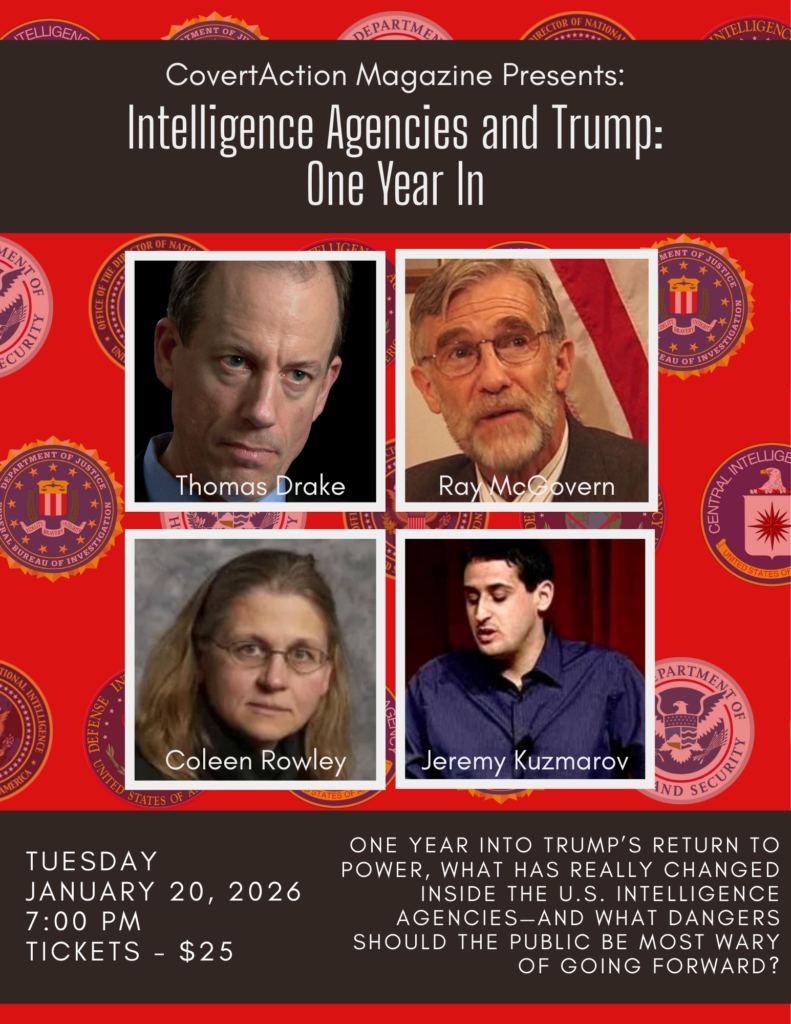
ABRAHAM JEWSUS CHRIST STINKIN WAS A MASS MURDERER FICTIONAL CHARACTER CREATED TO ENSLAVE AN MURDER AMERICA USING A TWO PARTY SYSTEM. LAWFUL JURISDICTION COURTS WERE ABOLISHED BY UNION ARMY OCCUPATION AND OVERTHROW OF LAWFUL GOVERNMENT AND TERRORIST NARCOSTATE MORPHINE MAFIA LAWYERS/POLICE RAPE AND MURDER WERE IMPOSED UPON THE U.S.A. IN 1860 AND MAINTAINED EVER SINCE. JURISDICTION COMES FROM A JURY NOT FROM A RAT WEARING A BLACK ROBE AND WAVING A BIBLE AROUND. WE DON’T DECIDE WHAT CASES ARE BROUGHT TO TRIAL BECAUSE ARRAIGNMENT AND INDICTMENT HAVE BEEN ABOLISHED.
NO PUBLIC RECORDS OF THE COURT PROCEEDING IN YOUR COUNTY ARE MAINTAINED ALTHOUGH YOU IDIOTICALLY BELIEVE THE BLATANT LIE THAT YOU CAN GO DOWN TO YOUR COUNTY COURT HOUSE AND SEE THE TRANSCRIPTS OF THE PROCEEDING. THE TRAITOR POLICE/LAWYER HEROIN MAFIA COURTS DO NOT TAKE CRIMINAL COMPLAINTS FROM WE THE PEOPLE. ONLY MEMBERS OF THEIR HEROIN MAFIA CAN BRING CRIMINAL COMPLAINTS. THOSE ARE NOT OUR COURTS. JURISDITION ORIGINATES WITH A JURY NOT WITH THEFT AND MURDER. DEMOCRATS AND REPUBLICANS ARE THIEVES AND MURDERERS, ALWAYS WERE, ALWAYS WILL BE. COUNTY SHERIFFS PAID WITH LAWFUL SILVER MONEY IS WHAT CONSTITUTES LAWFUL AUTHORITY. FAKE MONEY SLAVERY IS RAPE AND THEFT AND MURDER. KUZMAROV WROTE A STORY ABOUT A TRAITOR BABY KILLER THAT WIPES HIS ASS WITH OUR DECLARATION OF INDEPENDENCE. SERVED WITH THE CARTER WHITE HOUSE? SERVED WITH THE NATO HEROIN MAFIA TO MURDER AMERICA.
Thanks for waking up. Took you long enough.
Certain ELohim followers deceptively created Marxism as anticapitalist when in fact Marx married into and was working as “controlled opposition” for a wealthy industrialist family in Germany. Same deal with NY financed Bolshviks (cough, cough) creating the Communist state in Russia. It’s the same deception over and over, calling black white and vica versa. But I’m sure the true history of the lies and deception, and their current living promoters is of no importantance in the 21st century (sarc).
“In the 1920s and early 1930s, for example, they helped precipitate the Great Depression while financing the rise of the Nazis in Germany. The Nazis were admired in certain circles for waging a war on the political left and in 1941 starting a suicidal war against Soviet Russia that weakened both countries to the benefit of Anglo-American imperialism.”
This is like saying you play the flute by blowing in the hole at one end and moving your fingers over the holes in the tube.
The communist were agitating in Germany leading to the need for the Armistice (ceasefire), based on Wilson’s “14 Points”. The bankers dictated the terms in the Treaty of Versailles (and others) that were contrary to the “14 points” dismantling Germany, Austria, and Hungary. The communists overthrew governments in Hungary and parts of Germany. It is true that in the early days some bankers and industrialists financed the NSDAP, but that was to stave off the KDP (German Communist Party) that was one of the largest, growing to 2nd place, in the Reichstag. You obviously know nothing of German politics. Most of the parties in the Reichstag, including the NSDAP would be considered “left” in the American political paradigm, both now and 100 years ago.
Yes, it was a suicidal war, but had Germany not attacked, as Leon DeGrelle noted, Stalin would have been standing in Calais looking across sea at Britain. Communism and the “capitalists” you reference in this article, are the two sides of the same shekel.
Certain ELohim followers deceptively created Marxism as anticapitalist when in fact Marx married into and was working as “controlled opposition” for a wealthy German industrialist family. Same deal with NY financed Bolsheviks (cough, cough) who created the Communist regime in the Soviet Union. It’s the same deception over and over, calling black white and visa versa. But I’m sure the true history of the lies and deception, and their current living promoters is of no importance in the 21st century (sarc).